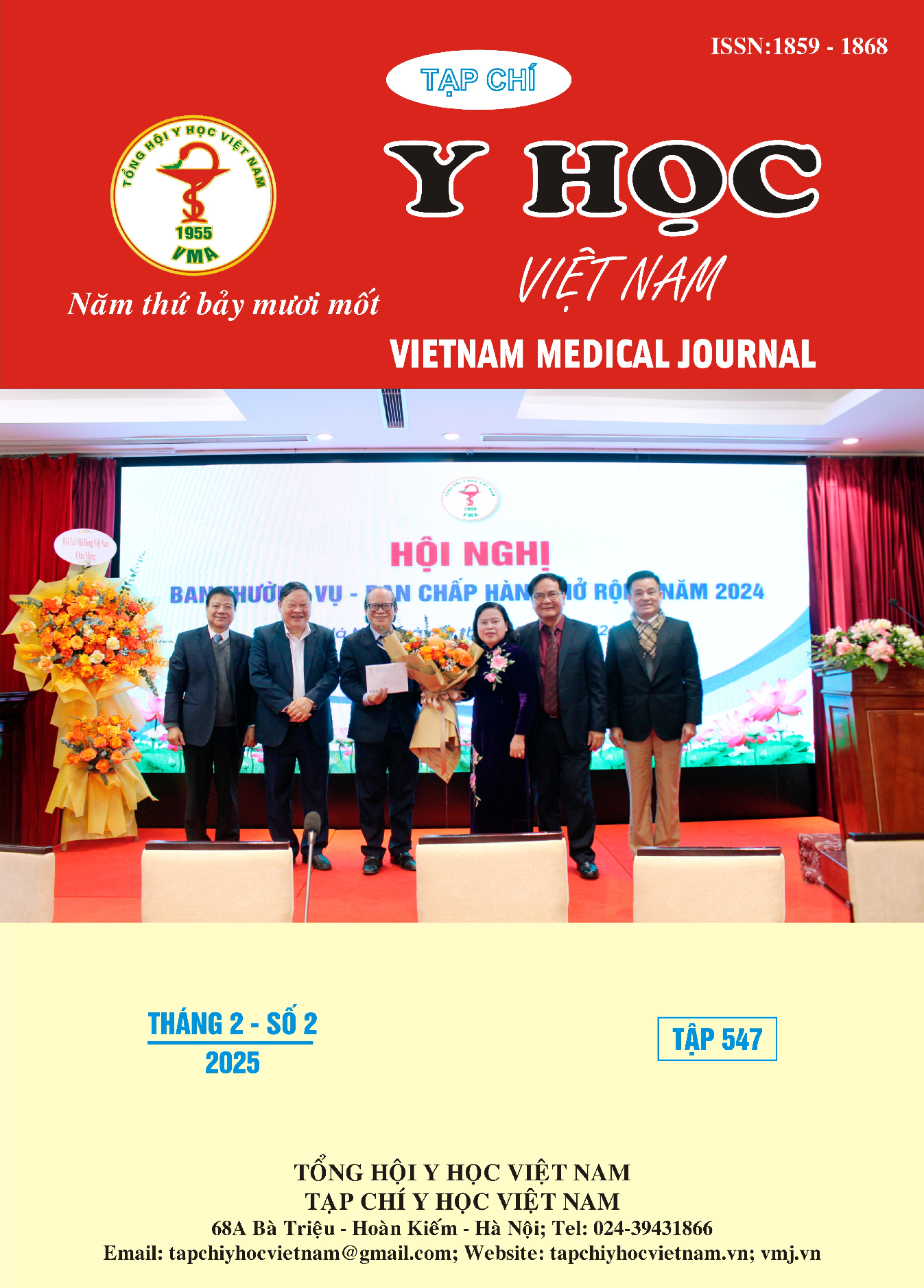ANKLE-BRACHIAL INDEX AND ANGIOGRAPHIC CHARACTERISTICS OF PATIENTS WITH CRITICAL LIMB ISCHEMIA
Main Article Content
Abstract
Objective: Describe the characteristics of ankle-brachial index and angiography in patients with critical limb anemia. Methods: Cross-sectional study, describing the ankle-brachial index and angiographic characteristics of 119 patients diagnosed with critical limb anemia at Military Central Hospital 108 and Hanoi Heart Institute from January 2018 – March 2023. Results: The mean ± SD of ABI was 0.35 ± 0.28, in which the majority of patients had the ABI between 0.4 and 0.75 (47.5%) and the ABI less than 0.4 (44.8%). The rate of infrapopliteal lesions was the highest with 40.1%, TASC C (40.9%), TASC B (40.1%), TASC D (15.2%), and TASC A (3.8%). The most damaged arteries were the superficial femoral artery (21.3%), the anterior tibial artery (21.3%), the posterior tibial artery (13.9%). 68.6% of arteries were completely occluded, and 31.4% of arteries were narrowed to more than 50% of the diameter of the lumen. 70.6% of patients had more than 3 damaged arteries. Conclusion: Infrapopliteal lesions were common in patients with critical limb ischemia; arterial lesions were complicated, in multi-level anatomic regions, multi-arterial lesions, and mainly completed arterial occlusion.
Article Details
Keywords
critical limb ischemia, angiography, ankle-brachial index.
References
2. Bùi Nguyễn Đức, Đỗ Doãn Lợi,Đinh Huỳnh Linh (2022). Đánh giá kết quả nong bóng phủ thuốc trong điều trị bệnh động mạch chi tầng dưới gối, Tạp chí Y học Việt Nam, 521(2):176-179.
3. Aboyans V., Jean-Baptiste R., Marie-Louise E. L., et al. (2017). 2017 ESC Guidelines on the Diagnosis and Treatment of Peripheral Arterial Diseases, in collaboration with the European Society for Vascular Surgery (ESVS), European Heart Journal, 39(9):763-816.
4. Lâm Văn Nút,Nguyễn Hữu Tường (2023). Đánh giá kết quả can thiệp nội mạch điều trị hẹp động mạch chậu đùi mạn tính có thiếu máu chi trầm trọng, Tạp chí Y học Việt Nam, 525(1B):259-67.
5. Lương Tuấn Anh (2019). Nghiên cứu đặc điểm lâm sàng, cận lâm sàng và hiệu quả điều trị can thiệp nội mạch bệnh động mạch chi dưới mạn tính khu vực dưới gối. Luận án tiến sỹ y học, Viện nghiên cứu khoa học y dược lâm sàng 108.
6. Iida O., Nakamura M., Yamauchi Y., et al. (2013). Endovascular treatment for infrainguinal vessels in patients with critical limb ischemia: OLIVE registry, a prospective, multicenter study in Japan with 12-month follow-up, Circ Cardiovasc Interv, 6(1):68-76.
7. Cha J. J., Kim J. Y., Kim H., et al. (2022). Long-term Clinical Outcomes and Prognostic Factors After Endovascular Treatment in Patients With Chronic Limb Threatening Ischemia, Korean Circ J, 52(6):429-440.
8. Kok H. K., Asadi H., Sheehan M., et al. (2017). Outcomes of infrapopliteal angioplasty for limb salvage based on the updated TASC II classification, Diagn Interv Radiol, 23(5):360-364.
9. Lê Quang Thứu, Nguyễn Đỗ Nhân,Lê Đình Thanh (2024). Viêm tắc động mạch tầng dưới gối có biến chứng mất mô: Kết quả can thiệp nội mạch, Tạp chí Y học Việt Nam, 535(2):26-30.


